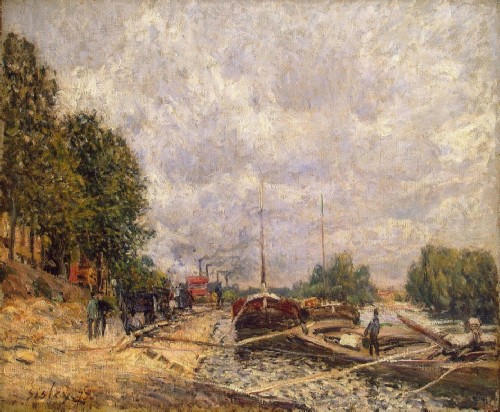Alfred Sisley was a supporter of plein air painting and one of the most faithful followers of the new trend. Alfred Sisley changed traditional views on art, fought conservatism and suffered from misunderstanding. His work is a significant contribution not only to the history of impressionism, but also to the genre of landscape in general.

The work of Alfred Sisley
Since 1861, Sisley and his friends worked in the open air, learning from the representatives of the Barbizon school and from Camille Corot. Artists experimented with color and display of sunlight, but their innovative painting was not approved by the public. During these difficult years, Alfred Sisley had an easier time than other impressionists, as he received funds from his father. Sometimes the distressed Renoir came to live with him.

Sisley’s mother died in 1866 and he met his future wife, Eugénie Lesouezec. The charming girl came from a good but impoverished family, and was forced to sell flowers and pose for artists. Sisley’s father did not approve of this connection and left the youngest son without financial support. From the beginning of the 1870s, the artist had to support himself and his wife with two children only by selling his paintings, which became highly valued only after his death.

In an attempt to improve their financial situation, Alfred Sisley and other young artists organized the Anonymous Society of Painters, Sculptors and Engravers. This society organized the first exhibition of the Impressionists. In the future, Sisley took part in all impressionist exhibitions. But his paintings were sold at low prices, so he was always short of money. In 1880, the artist and his family were forced to move to the town of More-sur-Loing, 100 kilometers from Paris. The gentle landscapes of this place, located near the forest of Fontainebleau, fully met the tastes of the painter.
Sisley died on January 29, 1899, a few months after his wife. He lived less than his friends and did not wait for recognition.
His painting was highly acclaimed after the 1900 World’s Fair.
Then critics drew attention to the originality, subtle coloring and special charm of the paintings of this master.












